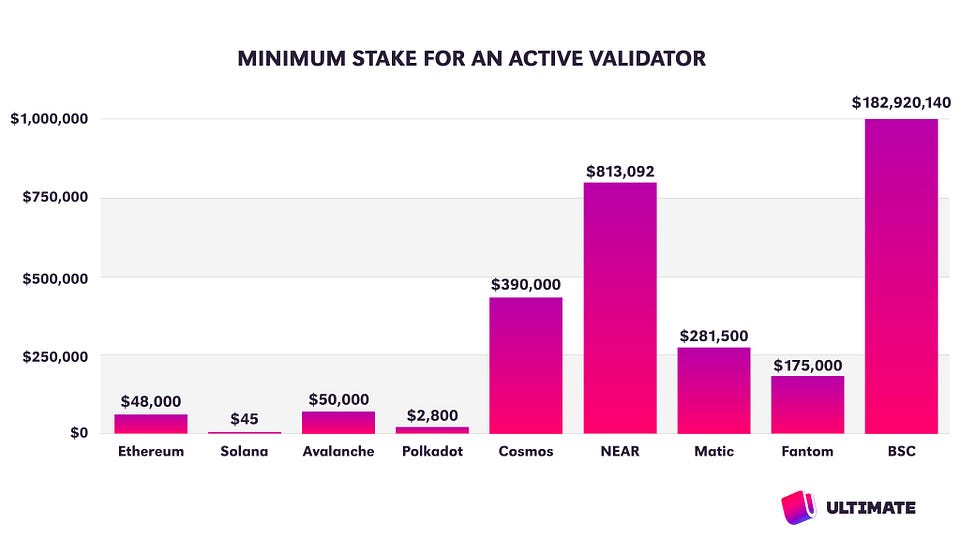The most decentralized network — Polkadot
Another year, and another Top #2 for Polkadot in terms of security and decentralization. The Nakamoto Coefficient has a score of 93 at the end of 2023. Let’s understand what this means…
The Nakamoto Coefficient is described by the number of node operators who possess more than one-third (33.33%) of the total stake within the network. In simpler terms, a higher Nakamoto Coefficient enhances the network’s resilience against such attacks. The increased resilience to these attacks, in turn, contributes to greater decentralization and censorship resistance within the network.
To enhance the Nakamoto Coefficient, users should stake their tokens with smaller (non-top #10), independent validator operators who manage a smaller balance of stake.
By the end of 2022, Polkadot’s Nakamoto coefficient had reached 70, surpassing that of mainstream chains like BSC, Solana, and Avalanche. Today, with a 33% increase in the Nakamoto coefficient, Polkadot is significantly ahead in terms of decentralization and security when compared to the leading L1 networks.
The NPoS consensus mechanism facilitates Polkadot’s decentralization. Also, the minimum stake required for an active validator is relatively low compared to other L1 chains.
For comparison, the Nakamoto Coefficient score for Bitcoin is 7349, with a total of 14409 validators. In contrast, Polkadot’s score is 93, supported by 1043 validators. This means that with 14 times more validators, Bitcoin has a score only 7 times higher than Polkadot, highlighting the sophistication of the DOT architecture.
If a developer is looking for a secure, decentralized network with an SDK used by other L1s like @Cardano, @NEARProtocol, @AvailProject, their place is in Polkadot. It secures more than 48 parachains, each with its own ecosystem and dApps.
https://twitter.com/pitcoin%5F/status/1723110792470348145
It is akin to saying that Polkadot secures Ethereum, Solana, Injective, and over forty other blockchains — with the potential to reach 100 (currently).
This is due to the architecture of Polkadot’s Relay Chain, which allows parachains to focus on developing their specific products without worrying about security and interoperability functions — provided by the Relay Chain.
Yeah, it’s genius!!! Gavin Wood, the Ethereum co-founder, already knew that and decided to create Polkadot years ago to address the deficiencies he identified in the project he helped create (Ethereum).
https://twitter.com/pitcoin%5F/status/1581965837933563905
Thus, Polkadot doesn’t lead the decentralization ranking by chance; its architecture was designed from conception for this purpose. If you are a Dev looking for the Top tier chain — please join Polkadot.
Because soon everything will be: Secured by Polkadot.
Web 3. 0 enthusiastic - Polkadot & Astar Network ambassador
Welcome to the Pitcoin diary. Be prepared for an immersion in Polkadot, Kusama, and Astar Network ecosystem. Everything I write is my personal opinion - don't expect anything but chaos.
Polkadot Senior Ambassador and Astar Network all-star ambassador.








0 comments